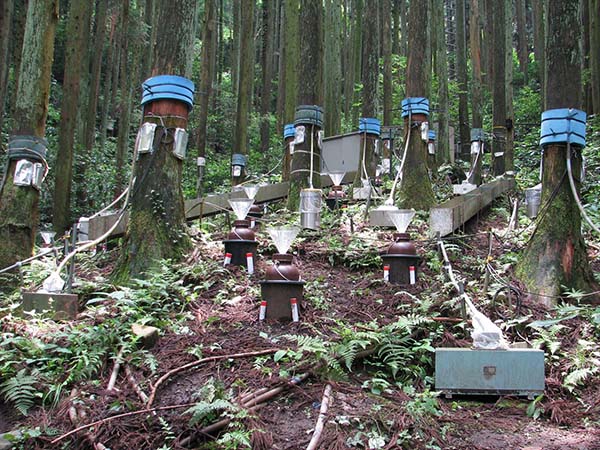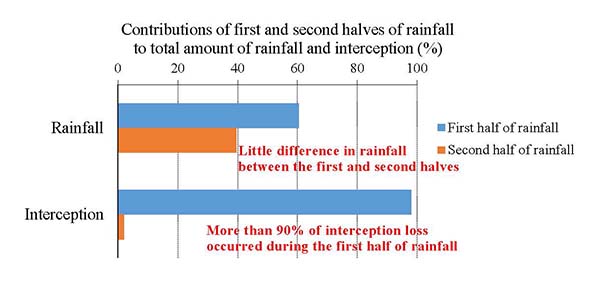Home > Research > Research Results > Research Results 2017 > Rainwater storage by the tree surface is a key mechanism governing interception loss
Update:July 11, 2017
Main content starts here.
Rainwater storage by the tree surface is a key mechanism governing interception loss
| Article title |
Intrastorm scale rainfall interception dynamics in a mature coniferous forest stand |
|---|---|
| Author (affiliation) |
Shin'ichi Iida (a), Delphis F. Levia (b&c), Akira Shimizu (d), Takanori Shimizu (a), Koji Tamai (a), Tatsuhiko Nobuhiro (e), Naoki Kabeya (d), Shoji Noguchi (a), Shinji Sawano (a), Makoto Araki (a) (a) Department of Disaster Prevention, Meteorology and Hydrology, FFPRI, Tsukuba, Ibaraki, Japan. (b) Nagoya University, Aichi, Japan. (c) University of Delaware, Newark, DE, USA. (d) Kyushu Research Center, FFPRI, Kumamoto, Japan. (e) Hokkaido Research Center, FFPRI, Sapporo, Hokkaido, Japan. |
| Publication Journal |
Journal of Hydrology, 548: 770-783, May 2017, DOI:10.1016/j.jhydrol.2017.03.009( External link ) |
| Content introduction |
Some of the rain that falls in the forest is captured by the branches and leaves (tree crown) as well as the tree stem. Part of this rainwater evaporates into the atmosphere without flowing to the ground. This phenomenon is called canopy interception loss. The amount of interception loss can be as high as 10%–30% of the rainfall, and it is important to properly evaluate the canopy interception process to foster watershed conservation in the forest. Generally, under low humidity and high sunlight conditions, evaporation of water is high. However, the environmental conditions during rainfall are completely opposite with high humidity and low sunlight. The intrastorm dynamics of canopy interception are inadequately understood. Therefore, we measured hourly intensity of interception (amount of rainfall storage by tree surface) in a mature forest of Japanese cedar (photo). To account for seasonal variations in rainfall intensity, we conducted our observations for 3 years. Our results demonstrate that the hourly intensity of interception is high just after the rain begins, but generally decreases as the rain continues in the second half of the event. Furthermore, although there was no major difference in rainfall amounts between the first half and the second half of the rain event for many storms, we found that most of the interception loss occurred during the first half of rain event (Fig.). In addition, we measured the amount of water storage by cedar leaves and bark by immersing them in water. By converting these values into depth equivalents, we determined that as much as 7.2 mm of rain could be stored by the leaves and bark, an amount that was similar to the maximum value of interception loss observed for one rainfall event (6.7 mm). Based on these results, we conclude that rainwater intercepted by trees does not evaporate immediately, rather it evaporates gradually after it has accumulated and has been stored in cedar trees. This result suggests that the amount of rainwater storage on cedar crowns and stems is important for elucidating the mechanisms governing canopy interception loss. It also has implications to establish a model for estimating the amount of interception loss, which could improve our knowledge of water resources in forests.
Photo. Measurement of interception in a mature forest of Japanese cedar located in Tsukuba Experimental Watershed. Since we cannot directly measure the hourly intensity of interception, it is estimated by the residual between rainfall and sum of throughfall and stemflow. In this photo, throughfall is measured by troughs and manual rainfall gauges. Stemflow is collected by the collar fixed around the stem, and measured by a tipping-bucket flow meter.
Figure. The difference in interception amount between the first and second halves of storm events (data was cited from Iida et al. (2017)). |
Copyright © Forest Research and Management Organization. All rights reserved.


